FieldWeb Blog.
Get the knowledge and inspiration you need to run your home and commercial service business better.
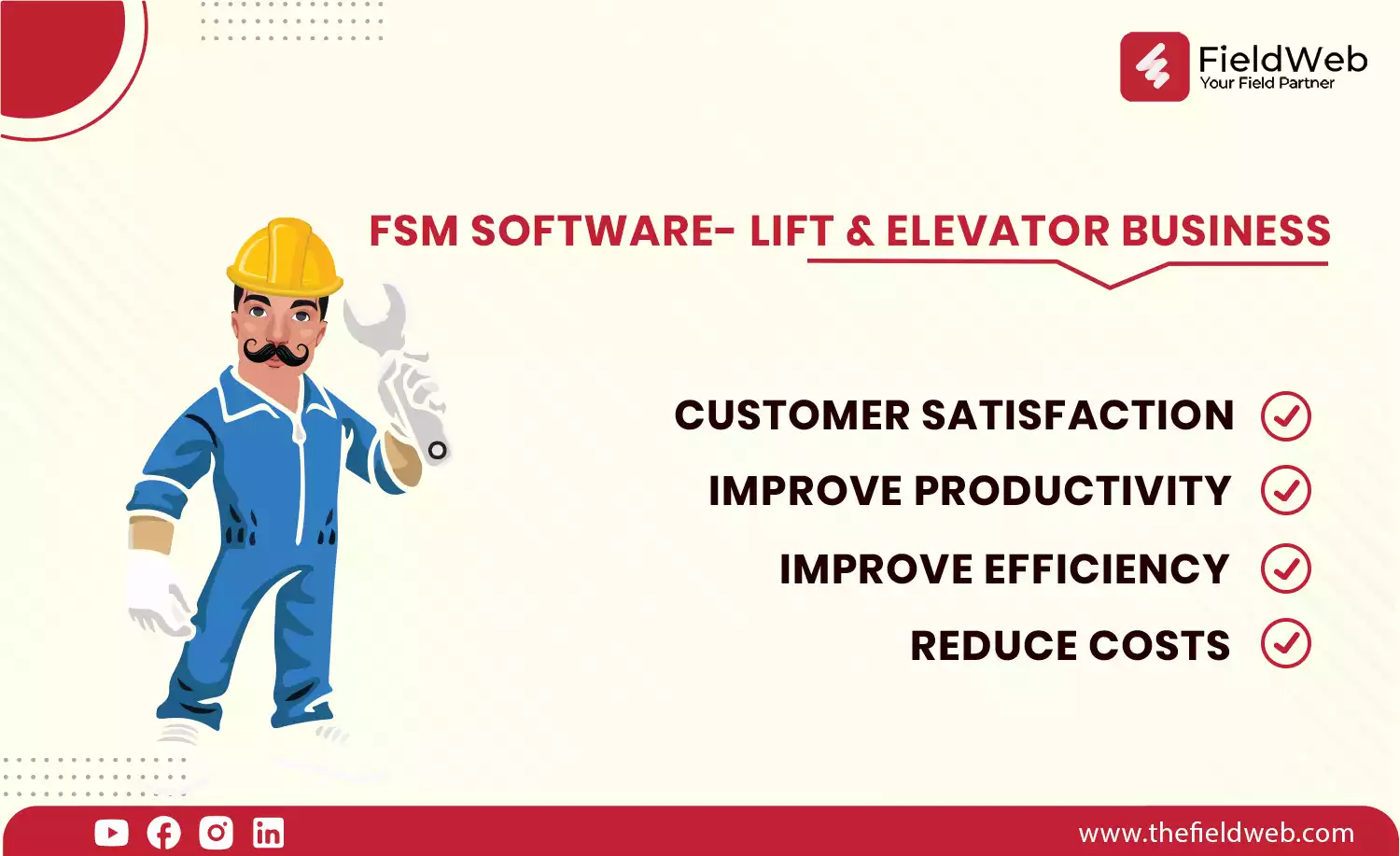
Lifts and elevators have become an essential part of modern life, providing a means of transportation between different floors of a building. They have revolutionised the way we live and work, making it easier and more convenient to move around buildings. In this blog, we will discuss everything you need to know about lifts and elevators, including their types, components, planning and designing, installation and maintenance, regulations and standards, market overview, and starting a lifts and elevators business.
Lifts and elevators are devices that move people or goods between floors of a building. They consist of a cab or platform that is lifted or lowered vertically along guide rails or hoistway by a motor-driven system.
The first lift was developed in 1743 by a French inventor named Blaise Pascal. It was a primitive hydraulic lift that was used to move heavy objects. In the 19th century, lifts and elevators became more common in buildings, especially in tall structures like skyscrapers. The development of steel and reinforced concrete allowed architects to design taller buildings, which required a reliable means of vertical transportation.
Lifts and elevators are important for several reasons. They improve accessibility, especially for people with disabilities, the elderly, and those carrying heavy loads. They also increase the efficiency of buildings by reducing the time it takes to move between floors. In addition, they add value to properties, especially in commercial and residential buildings.
There are several types of lifts and elevators, each designed for a specific purpose. Some of the most common types include:
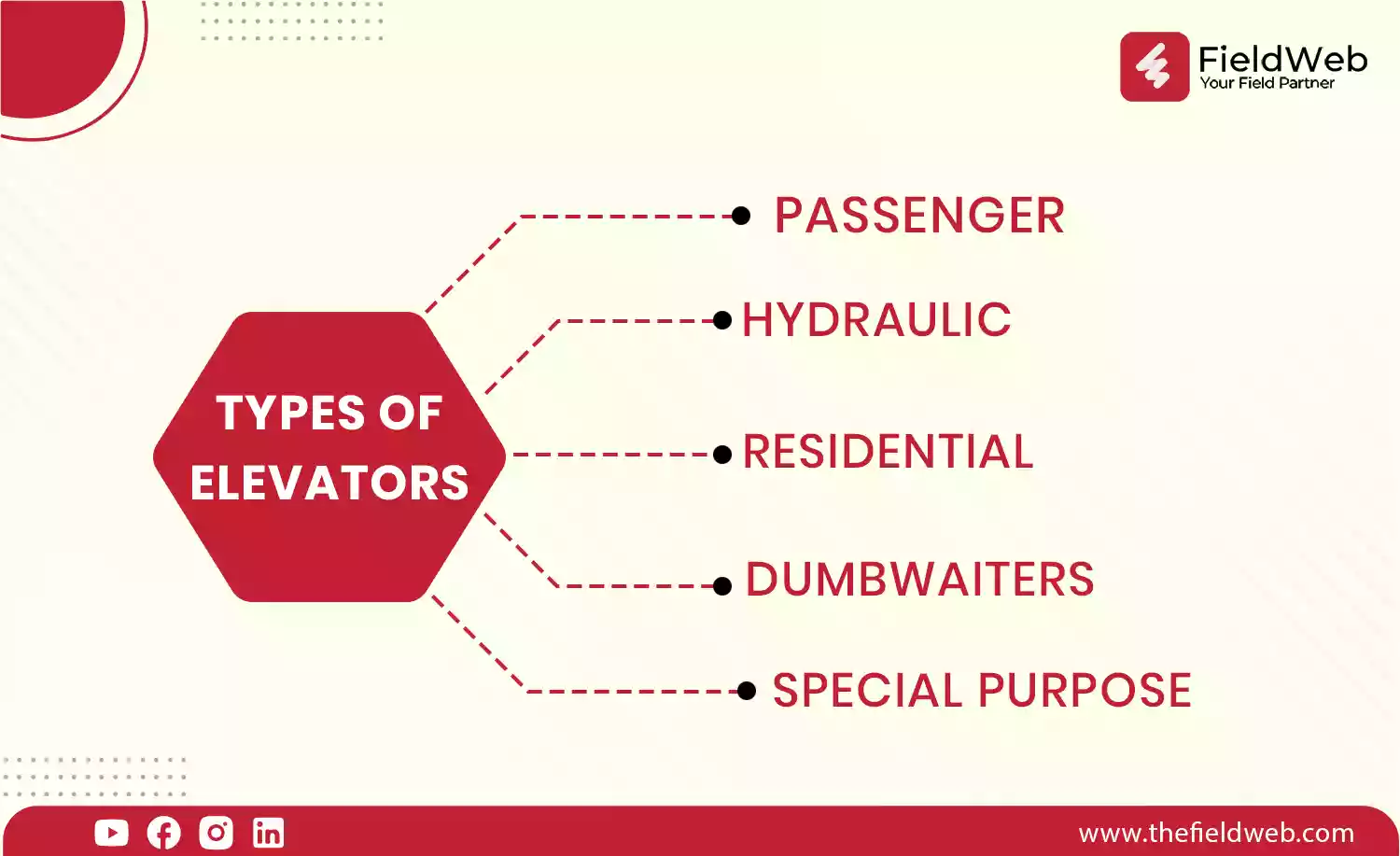
1. Passenger Elevators: Passenger elevators are designed to carry people between floors of a building. They are available in different sizes and capacities, depending on the building's usage and traffic.
2. Freight Elevators: Freight elevators are designed to carry heavy loads, such as goods, equipment, or vehicles. They are larger and more robust than passenger elevators and are often used in industrial or commercial buildings.
3. Hydraulic Elevators: Hydraulic elevators use a hydraulic piston to lift or lower the elevator cab. They are often used in low-rise buildings, as they are limited in height and speed.
4. Traction Elevators: Traction elevators use a motor-driven cable system to lift or lower the elevator cab. They are faster and more efficient than hydraulic elevators and can travel greater distances.
5. Residential Elevators: Residential elevators are designed for private homes and are often installed for accessibility or convenience purposes. They come in different styles and sizes and can be customised to match the home's decor.
6. Dumbwaiters: Dumbwaiters are small elevators used to transport goods or food between floors of a building. They are commonly found in restaurants, hotels, and hospitals.
7. Escalators and Moving Walkways: Escalators and moving walkways are continuous moving platforms that transport people between different levels of a building. They are commonly found in airports, train stations, and shopping malls.
8. Special Purpose Elevators: Special purpose elevators are designed for specific applications, such as vehicle elevators, paternoster elevators, and mine elevators.
Lifts and elevators are complex systems that consist of several components. Some of the most important components include:
Planning and designing lifts and elevators is a complex process that involves several factors. Some of the key factors to consider include:
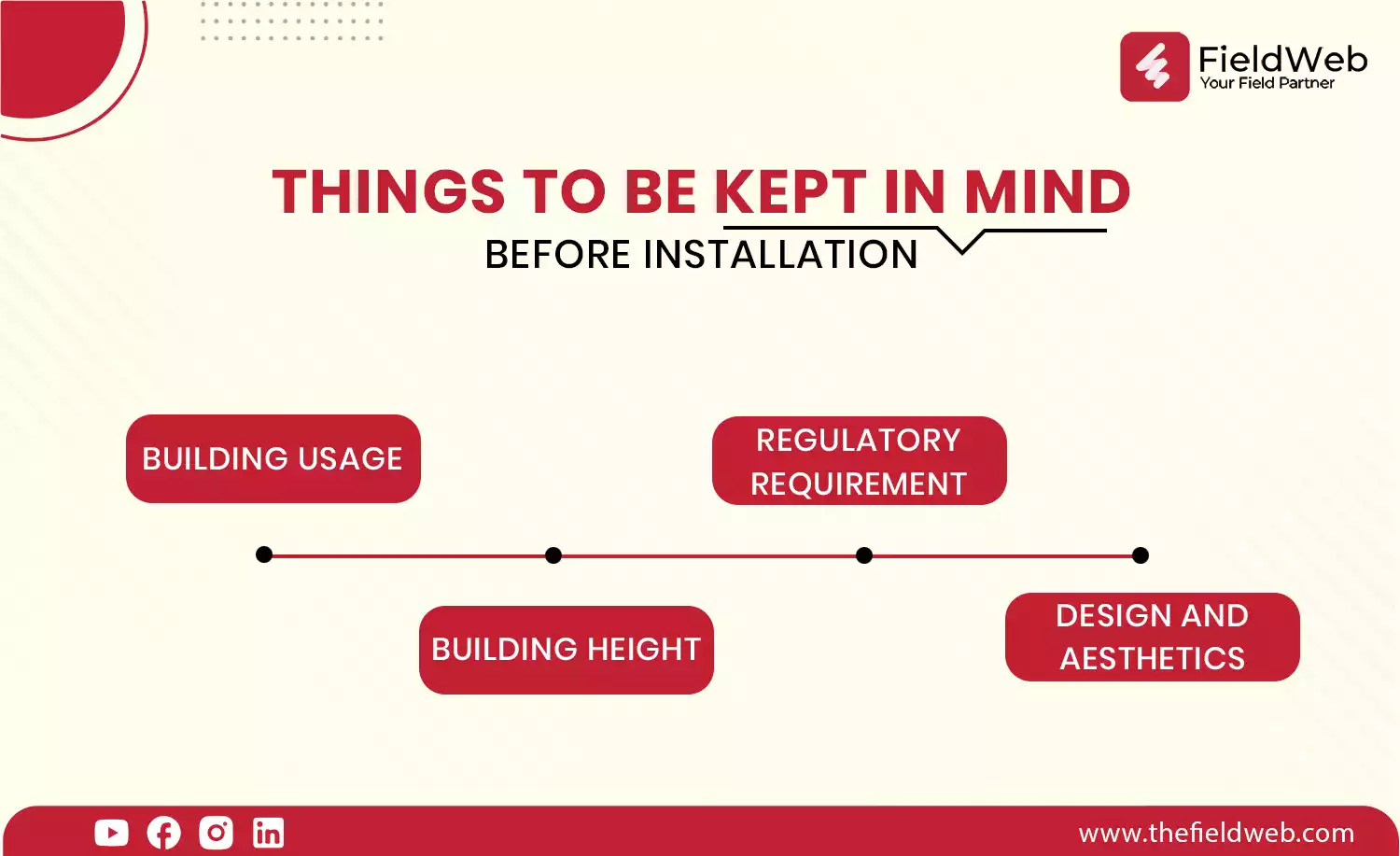
1. Building Usage: The building's usage and traffic patterns are important factors to consider when designing an elevator system. High-traffic buildings, such as office buildings or hospitals, require larger and faster elevators than low-traffic buildings, such as residential buildings.
2. Building Height: The height of the building also plays a role in determining the type of elevator system needed. Taller buildings require faster and more efficient elevator systems, such as traction elevators.
3. Code and Regulatory Requirements: Building codes and regulatory requirements must be taken into account when designing an elevator system. These requirements vary by location and can affect the size, capacity, and safety features of the elevator system.
4. Control System: The control system is the brain of the elevator, controlling the speed, direction, and stopping of the elevator cab. It consists of a series of buttons, sensors, and computer programs.
5. Aesthetics and Design: The aesthetics and design of the elevator system can also be important, especially in commercial and residential buildings. Elevator systems can be customised to match the building's decor and style.
Installing and maintaining lifts and elevators requires specialised knowledge and expertise. Here are some key steps to consider:
Lifts and elevators are subject to several regulations and standards to ensure their safety and efficiency. Some of the key regulations and standards include:
The lifts and elevators market is a growing industry, with increasing demand for vertical transportation in both commercial and residential buildings. According to a market research report by MarketsandMarkets, the global lifts and elevators market is projected to grow from $90.5 billion in 2020 to $105.6 billion by 2025, with a compound annual growth rate (CAGR) of 3.1% during the forecast period.
Factors driving the growth of the lifts and elevators market include urbanisation, increased construction activities, and the need for efficient and faster transportation systems. The market is also seeing a trend towards smart and connected elevators, which can improve the efficiency and safety of elevator systems.
The lifts and elevators business presents both challenges and opportunities for companies operating in the industry. Some of the key challenges and opportunities include:
Emerging Technologies: As discussed earlier, emerging technologies such as smart and connected elevators, regenerative drives, and machine learning and artificial intelligence present opportunities for lift and elevator companies to improve their offerings and provide more value to their customers.
Smart and connected elevators use sensors and data analytics to optimise elevator performance, reduce energy consumption, and improve passenger experience. Regenerative drives can convert the kinetic energy of the lift and elevator systems into electrical energy, which can be used to power other systems in the building. Machine learning and artificial intelligence can be used to optimise lift and elevator performance, predict maintenance needs, and improve safety. Companies that embrace these emerging technologies and invest in research and development are likely to succeed and thrive in the lift and elevator industry.
Environmental Concerns: Environmental concerns, particularly in terms of energy consumption and carbon emissions, are becoming increasingly important in the lift and elevator industry. Companies must prioritise sustainable practices and develop eco-friendly solutions to reduce their environmental impact.
One example of an eco-friendly solution is the use of regenerative drives, which can reduce energy consumption and carbon emissions by converting kinetic energy into electrical energy. Another example is the use of energy-efficient lighting and ventilation systems in lift and elevator installations. Companies that prioritise sustainability and develop innovative solutions to reduce their environmental impact are likely to succeed and differentiate themselves in the industry.
Customer Expectations: Customer expectations are increasing in the lift and elevator industry, particularly in terms of safety, efficiency, and user experience. Customers expect lift and elevator systems to be safe, reliable, and easy to use.
Companies that invest in the latest technologies and innovations to improve the safety, efficiency, and user experience of their systems are more likely to succeed and satisfy their customers. This includes the use of smart and connected elevators, destination control systems, and machine learning and artificial intelligence.
Skilled Labour Shortage: There is a shortage of skilled labour in the lift and elevator industry, particularly in areas such as installation, maintenance, and repair. This shortage is due to factors such as an ageing workforce and a lack of interest in technical trades among younger generations.
Companies must invest in training and development programs to attract and retain skilled workers and ensure the quality of their services. This includes apprenticeship programs, on-the-job training, and continuing education and certification programs. Companies that prioritise training and development and invest in their workforce are more likely to succeed and differentiate themselves in the industry.
Starting a lifts and elevators business can be a lucrative venture for entrepreneurs with the right knowledge and resources. Some key factors to consider when starting a lifts and elevators business include:
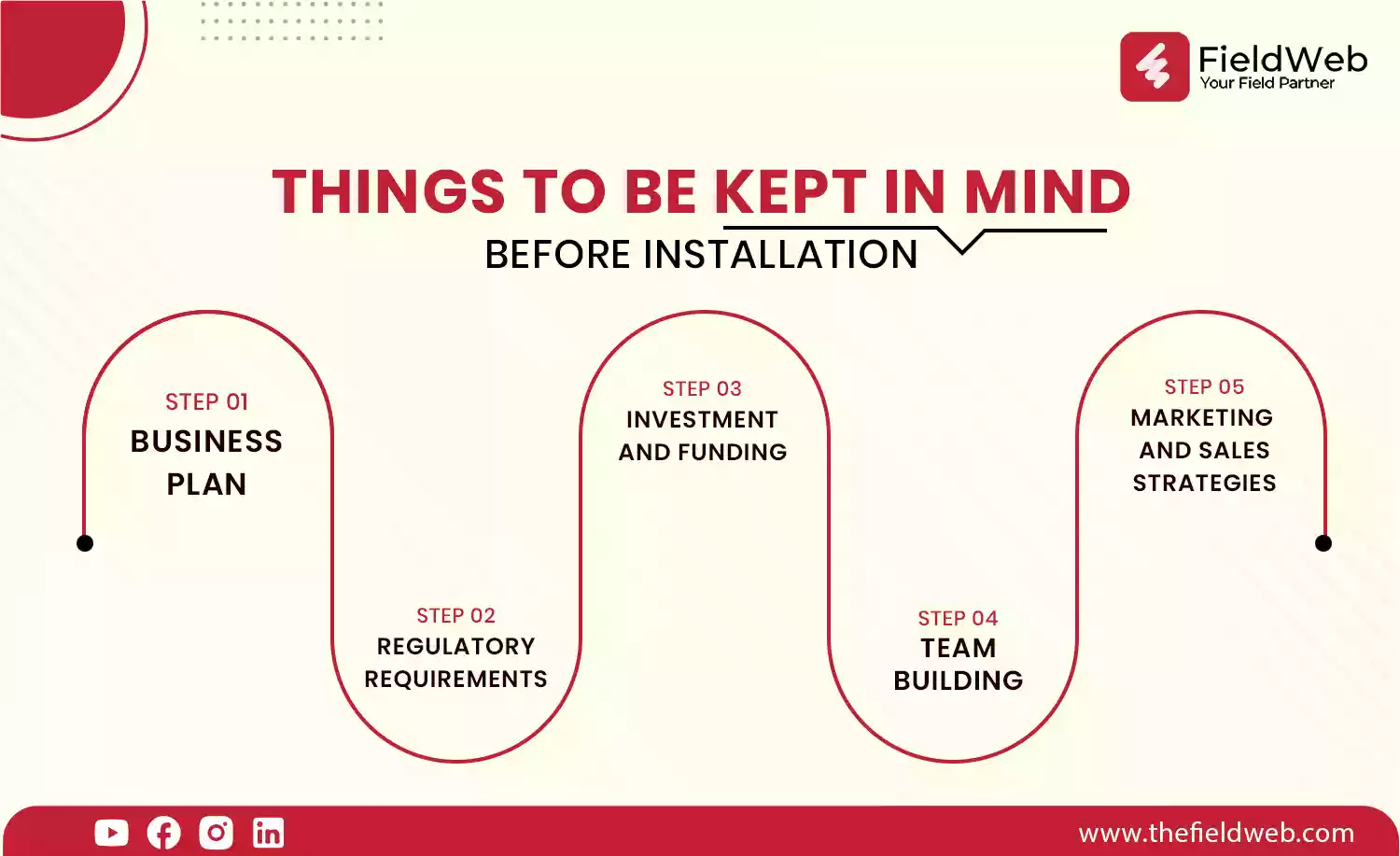
Business Plan: A solid business plan is essential for starting any business, including a lifts and elevators business. A business plan should outline the company's goals, target market, competition, products and services, marketing and sales strategies, financial projections, and more. It is important to conduct thorough market research and analysis to ensure there is a demand for lifts and elevators in the chosen location.
Legal and Regulatory Requirements: The lifts and elevators industry is subject to various legal and regulatory requirements. These may include obtaining licences and permits, complying with safety regulations, and meeting building codes and standards. It is important to research and understand the legal and regulatory requirements of the industry and ensure compliance to avoid penalties or legal issues.
Investment and Funding: Starting a lifts and elevators business requires a significant investment in equipment, tools, and materials. It is important to develop a realistic budget and secure adequate funding to cover the initial costs of starting the business. This may include loans, grants, or investors.
Marketing and Sales Strategies: Marketing and sales strategies are important for promoting the business and attracting customers. This may include developing a website, creating marketing materials such as brochures and flyers, attending trade shows and conferences, and building relationships with potential customers and partners.
Field Service Management (FSM) software is an essential tool for lifts and elevators businesses. FSM software can help streamline business operations, increase efficiency, and improve customer satisfaction. Some key features of FSM software include:
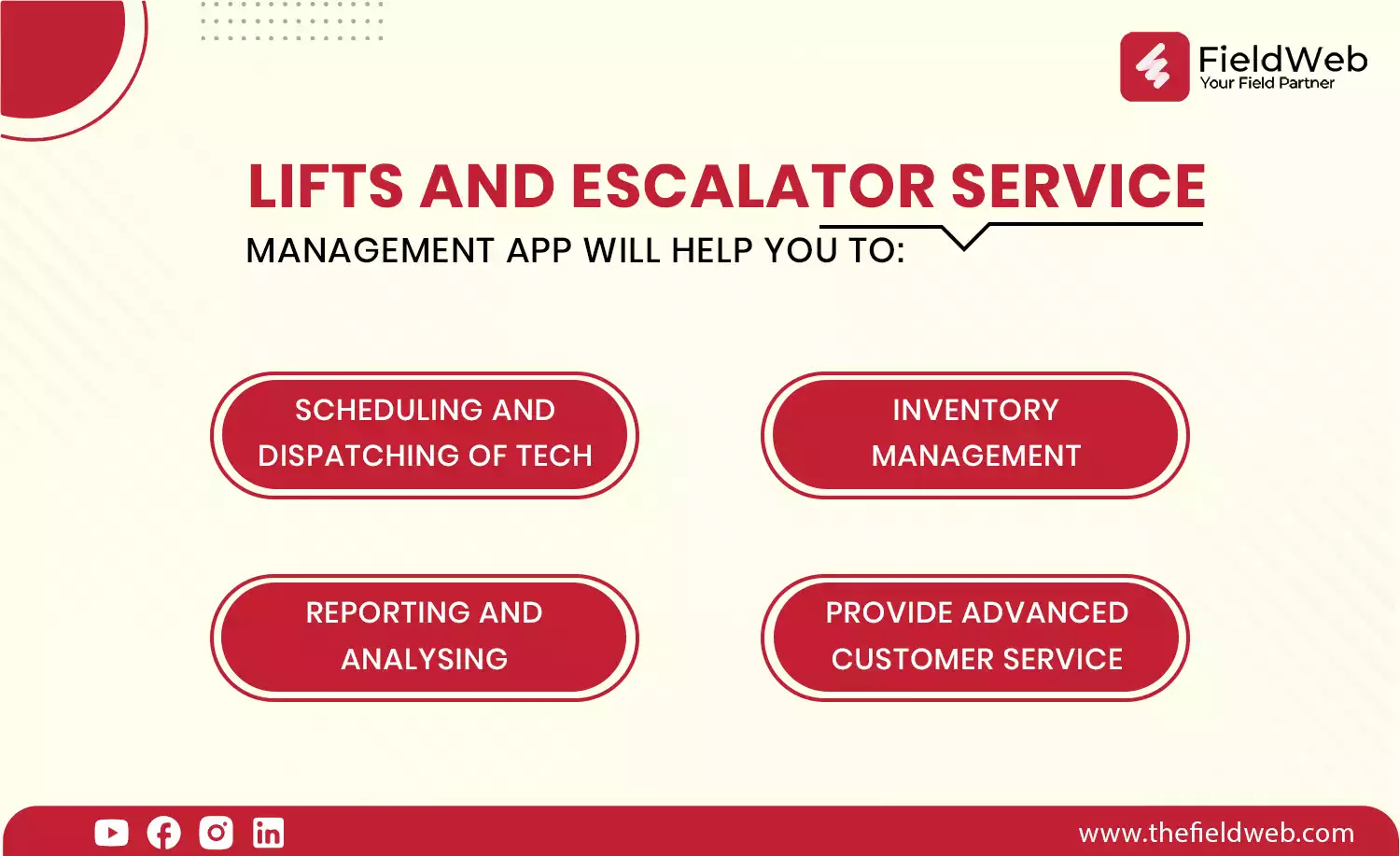
Inventory Management: FSM software can help manage inventory levels and track parts and materials used in installations and repairs. This can help reduce costs, improve productivity, and ensure timely completion of tasks.
Mobile Access: FSM software can provide technicians with mobile access to job information, schedules, and customer information. This can help technicians work more efficiently and effectively, which can improve customer satisfaction.
Reporting and Analytics: FSM software can provide real-time reporting and analytics on key performance indicators such as response times, completion rates, and customer satisfaction. This can help managers make data-driven decisions to improve business operations and customer service.
Overall, FSM software can be a valuable tool for lifts and elevators businesses to improve efficiency, reduce costs, and improve customer satisfaction. It is important to choose a reliable and user-friendly FSM software that meets the specific needs of the business, with features specifically tailored to the lifts and elevators industry.
In conclusion, the lifts and elevators industry offers tremendous opportunities for entrepreneurs who are willing to invest in the right tools, technology, and people. Starting a business in this industry requires careful planning, compliance with regulatory requirements, and a strong focus on customer service.
The industry is also evolving rapidly, with emerging technologies and environmental concerns driving innovation and change. With the right strategies, lifts and elevators businesses can overcome challenges such as skilled labour shortages and fierce competition.
FSM software can be a valuable tool for lifts and elevators businesses to improve efficiency, reduce costs, and improve customer satisfaction. It is important to choose a reliable and user-friendly FSM software that meets the specific needs of the business, with features specifically tailored to the lifts and elevators industry. By taking advantage of the opportunities and addressing the challenges, lifts and elevators businesses can succeed in this dynamic and rewarding industry.